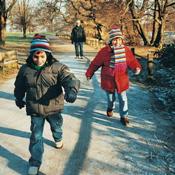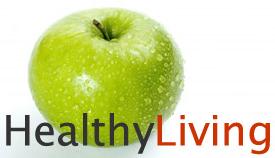Health Wellness and Disease
On A Mission of giving answers to questions
about Health Wellness and Disease...
- Many factors affect your health. Some you cannot control, such as your genetic makeup or your age. But you can make changes to your lifestyle. By taking steps toward healthy living, you can help reduce your risk of heart disease, cancer, stroke and other serious diseases. For example,
- See your doctor for regular screenings, not only when sick
- Maintain a healthy weight
- Eat a variety of healthy foods, limit calories and saturated fat
- Be physically active
- Control your blood pressure and cholesterol
- Quit smoking
- Protect yourself from too much sun exposure
While maintaining good health habits does not guaranty a long life, it can certainly improve the quality of your life. A few simple things, if practiced regularly, can help reduce your risk of illness and disease plus improve your lifestyle:
- Get regular exercise and control your weight.
- Don't smoke or abuse drugs.
- Do not drink a lot of alcohol. Avoid alcohol completely if you have a history of alcoholism.
- Eat a balanced and healthy diet.
- Take care of your teeth.
- Manage high blood pressure.
- Follow good safety practices.
EXERCISE
Exercise is a key factor in staying healthy. Exercise strengthens the bones, heart, lungs, tones muscles, improves vigorous vitality, relieves depression, and helps you sleep better.
If you are just starting an exercise program and have any pre-existing medical conditions, such as obesity, hypertension, or diabetes, ask your doctor about an exercise stress test. This test will help you establish safe limits for a new exercise program.
Tips for healthy exercise:
- Begin exercising slowly at first, we suggest you start with regular walking. Don't expect to "get into shape" overnight. Your fitness should start to improve within a few months, providing you have maintained a consistent exercise regimen.
- You should work hard enough to sweat during each exercise period, but not exercise so hard you can't have a conversation.
- Plan an exercise routine that lasts 20-30 minutes, and perform the workout at least 3-5 days a week. Include stretching before and after your exercise. This will help avoid injury. Remember to start slowly and listen to your body. If it hurts badly, then you are probably overdoing it.
- Aerobic exercises strengthen the heart and lungs and should be part of the fitness routine. Examples of good aerobic exercises include walking, running, jogging, water aerobics, swimming, cross-country skiing, rowing, rope skipping, dancing, racket sports, and cycling. For the biggest benefit, aerobic exercise must be sustained for at least a 15-minutes or longer (recommended).
- Strength and flexibility exercises are important and help you maintain your ability to do daily activities and maintain balance as you grow older.
Adjustments in exercise programs need to be made for young children, pregnant women, the elderly, patients who are obese or disabled, and heart-attack survivors. Programs should also be modified for high altitudes and extreme hot or cold conditions.
SMOKING
Cigarette smoking is the single most preventable cause of premature death in the United States, and more than 400,000 Americans die each year from cigarette smoking. One out of every five deaths annually is either directly or indirectly caused by smoking.
Second-hand cigarette smoke exposure causes emphysema and several thousand lung cancer deaths in adult non-smokers in the US every year. Studies have also linked second-hand smoke with heart disease.
The serious diseases most frequently caused by smoking are:
- Angina
- Chronic bronchitis
- Emphysema
- Heart attack
- Leg pain as a result of blockages in lower extremity arteries (claudication)
- Lung cancer (the risk for smokers is 10 times greater than for nonsmokers)
- Stroke (the risk for smokers is triple vs non-smokers)
It is never too late to quit smoking. Two years after stopping, your risk of heart attack returns to average and there your lung cancer risk drops by about a third. After 10-years of not smoking, your risk for lung cancer returns to near normal.
Smoking and smokeless tobacco
ALCOHOLISM and ALCOHOL USE
Consumption of alcohol gradually depresses brain function.  Emotions, thought processes, and judgment are first to be affected by alcohol consumption. With continued drinking, motor control becomes impaired, causing slurred speech, slower reactions, and poor balance. Both increased body fat and drinking on an empty stomach speed the rate of alcohol intoxication.
Emotions, thought processes, and judgment are first to be affected by alcohol consumption. With continued drinking, motor control becomes impaired, causing slurred speech, slower reactions, and poor balance. Both increased body fat and drinking on an empty stomach speed the rate of alcohol intoxication.
The diseases most frequently caused by alcoholism are:
- Acute and chronic pancreatitis
- Bleeding esophageal
- Cancer of larynx, cancer of the esophagus, stomach and pancreas
- Cardiomyopathy
- Cirrhosis & disease of the liver
- Hepatitis
- Impotence
- Mallory-Weiss tear
- Menstrual irregularity
- Sleep disorders
- Wernicke-Korsakoff syndrome
Do not drink alcohol when you are pregnant. Fetal alcohol syndrome is the most common known cause of mental retardation.
Parents should talk to their children about the dangerous effects of alcohol. Establish trusting communication with your children so that sensitive issues can be discussed. Don't allow your children to be guided completely by their peers. Children need firm and loving guidance.
Alcoholism - support group
DRUG USE AND ABUSE
Everybody reacts differently to meds. Always tell your doctor about the drugs you are taking, including over-the-counter medications and vitamins.
Drug interactions can have serious health consequences. Elderly people should be particularly careful about drug interactions with multiple medications, and should closely monitor this situation if it applies. Carry a list of your current medications, especially when going to different doctors for the treatment of different problems.
Avoid drinking alcohol while on medications -- this combination can be very dangerous, particularly with tranquilizers or painkillers.
Mothers-to-be should avoid taking any un-prescribed drugs during pregnancy -- especially during the first trimester, when the fetus is very sensitive to drugs in the mother's body. If you have been taking any drugs just before becoming pregnant, inform your doctor.
Always take medication as prescribed. Taking any drug in a manner other than as intended or in quantities other than directed is considered drug abuse. Abuse and addiction are not just associated with illegal "street" drugs. Legal drugs such as laxatives, painkillers, nasal sprays, diet pills, and cough medicines can also be misused, resulting in serious health problems.
Addiction is defined as compulsive use of a substance despite continued negative consequences. Simply needing a drug (like a painkiller, anti-depressant, xanax and taking it as prescribed is not addiction, unless used excessively.
The signs and symptoms of addiction are different for each person but may include:
- Agitation
- Bloodshot eyes
- Dazed appearance
- Excessive sweating
- Flushed skin
- Insomnia
- Persistent running nose
- Personality changes
- Unexplained weight loss
- Unpredictable moods
Signs of drug abuse in teenagers may include: apathy, temper tantrums, missing school, sloppy dress, lack of interest in school, excessive demands for privacy, secrecy, and a change in type of friends. However, some teens in trouble may show none of these symptoms.
DEALING WITH STRESS and ANXIETY
Stress is normal. It can be a great motivator, and in small amounts can even improve health. However, excessive stress can cause headaches, sleeping problems, stomach problems, mood problems, and more.
Learn to recognize the things most likely to cause stress in your life. You may not be able to avoid all of them, but knowing the source of your stress can help you feel more "in control." The more control you feel you have over your life, the less damaging the stress.
OBESITY
Obesity is serious health concern. It adds stress to the heart, bones, and muscles. and increases the risk for high blood pressure, stroke, varicose veins, breast cancer, and gallbladder disease.
Overeating, an unhealthy diet, and a lack of physical activity can lead to obesity. Your family history also plays a role.
BALANCED DIET
As a general rule, you should choose foods that are low in saturated and trans fat, and low in cholesterol. Also limit your intake of sugar, salt (sodium), and alcohol. Eat more fiber, which can be found in fruits, vegetables, beans, whole grain products, and nuts.
TOOTH CARE
Good dental hygiene is essential in preserving your teeth for a lifetime. It is important for children to start young with good dental habits. Proper hygiene should include:
- Daily flossing and twice-daily brushing of the teeth
- Use of fluoride toothpaste
- Regular dental checkups
- Limiting sugar intake
- Using a toothbrush with soft bristles (replace the toothbrush with a new one as soon as the bristles become bent)
- Having the dentist instruct you on proper brushing and flossing techniques
- Being aware that "tartar-controlled" toothpastes have little or no effect on tartar below the gum line and, therefore, will not provide a safeguard against gum disease
Exercise and Physical Fitness
There are 1,440 minutes in every day. Schedule 30 of them for physical activity!
Regular exercise is a critical part of staying healthy. People who are active live longer and feel better. Exercise can help you maintain a healthy weight. It can delay or prevent diabetes, some cancers and heart problems. Click for health tip of the day.
Most adults need at least 30-minutes of moderate physical activity at least 5-days a week. Examples include walking briskly, mowing the lawn, dancing, swimming for recreation or bicycling. Stretching and weight training can also strengthen your body and improve your fitness level.
The key is to find the right exercise for you. If it is fun, you are more likely to stay motivated. You may want to walk with a friend, join a class or plan a group bike ride. If you've been inactive for awhile, use a sensible approach and start out slowly.
Physical activity is any activity that causes your body to work harder than normal. It describes activities that are beyond your daily routine of sitting, standing, and walking up stairs. Everyone can benefit from increased physical activity.
Physical activity can help you:
- Burn calories and reduce body fat
- Control and maintain your current weight
- Improve chronic medical conditions such as diabetes, high blood pressure, and heart disease
- Improve your fitness and ability to perform daily activities
- Prevent diseases such as osteoporosis and depression
- Reduce your appetite
Physical activity is divided into two types of activities for adults: aerobic activity and muscle-strengthening activity.
Aerobic activity can be of moderate or vigorous intensity. It is important to start with aerobic activities that are less intense at first, and work up to more vigorous activity.
While performing moderate activities (such as brisk walking), you should be able to talk but not sing. Vigorous activity requires taking a breath every few words.
You can also monitor the intensity of exercise by using your heart rate. The target heart rate during physical activity should be 60% - 90% of the maximum heart rate.
To calculate your target heart rate, use the following formula:
- 220 (beats per minute) minus age = maximum heart rate.
- Maximum heart rate multiplied by the intensity level = target heart rate.
For example, a 50-year-old woman exercising at 60% maximum would use the following calculation:
- 220 - 50 = 170 (maximum heart rate)
- 170 X 60% = 102 (target heart rate)
This is her target heart rate, regardless of the type of physical activity she elects to do.
Physical activity at 60 to 70% of the maximum heart rate is considered moderate intensity exercise. You can moderately exercise safely for a long period of time. It is best to start an exercise program with moderate intensity exercise.
The other type of physical activity is muscle strengthening exercise. Muscle strengthening can be done with a weight program, heavy gardening, or push-ups and calisthenics.
The amount of physical activity is very important to achieve health benefits. Any increase in activity is better than less activity.
The recommended amount of time spent doing aerobic activity is:
- 2.5-hours a week of moderate activity, increasing to 5-hours a week
- Or 75-minutes of vigorous activity, increasing to 2.5-hours per week
Muscle strengthening is recommended twice a week.
Try to do some form of physical activity at least three times a week. Increasing to four or 5-times a week is even more helpful. Spread out the physical activity through the week, rather than doing it on three or four consecutive days to reduce the risk of injuries.
People who have chronic medical conditions, are older, are pregnant, or have been very inactive may need to start with less activity and increase more slowly. Increasing both aerobic and muscle strengthening physical activity has benefits, even if you cannot reach your goals.
BENEFITS of Physical activity
Physical activity contributes to health by:
- Decreasing the risk for cardiovascular disease
- Reducing the amount of bone loss that is associated with age and osteoporosis
- Reducing the resting heart rate
Physical activity also helps the body use calories better, which helps with weight loss and maintenance. It can increase basal metabolic rate, and reduce appetite and body fat.
SIDE EFFECTS of Physical activity
Physical activity should be done at a rate that is right for you. When you increase activity gradually in both intensity and time you are unlikely to have any side effects.
An evaluation by an exercise physiologist is helpful in order to to avoid injuries. Injuries can occur if you start physical activity too quickly, with too much intensity, or for too long.
Exercise for Children
Like adults, kids need exercise. Most children need at least an hour of physical activity every day. Regular exercise helps children
Most children need at least an hour of physical activity every day. Regular exercise helps children
- Feel less stressed
- Feel better about themselves
- Feel more ready to learn in school
- Keep a healthy weight
- Build and keep healthy bones, muscles and joints
- Sleep better at night
As kids spend more time watching TV, they spend less time running and playing. Parents should limit TV, video game and computer time. Parents can set a good example by being active themselves. Exercising together can be fun for everyone. Competitive sports can help kids stay fit. Walking or biking to school, dancing, bowling and yoga are some other ways for kids to get exercise.
Other Wellness Sites of Interest
» Wound Treatment Center recommended resource website





